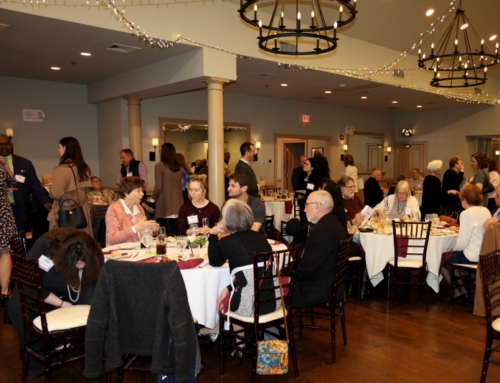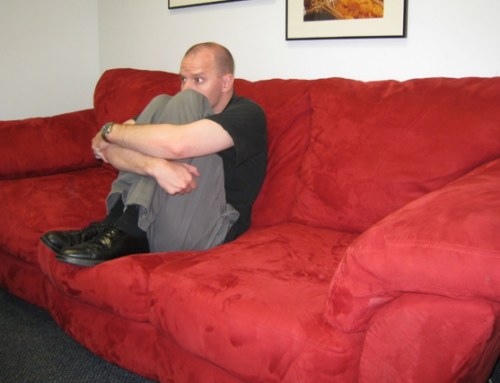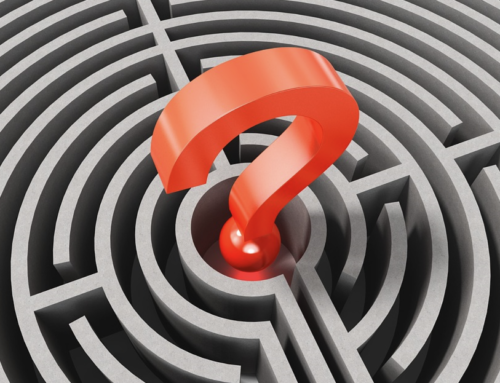Ask almost anyone in the greater Philadelphia area what their favorite season of the year is. Unless they are avid skiers or snowboarders or winter in southern Florida, they are unlikely to brightly respond “my favorite season is winter. Yayyy!”
Most people in the Philadelphia area and other areas in the northern U.S. acknowledge that they may feel a little out of sorts during the cold, dark months of late fall and through the winter. However, for about 5% of Americans, this time of year represents much more than a difference in seasonal preference. These individuals experience a seasonal pattern in their moods that result in clinical depression during the colder and darker months of the year. This condition is “seasonal affective disorder,” commonly known as “SAD.” (Another 14 percent or so experience milder seasonal symptoms.)
SAD is characterized by a consistent seasonal variation in depressed mood and other symptoms. The most common seasonal variation is onset of symptoms during autumn and winter and subsequent improvement or complete remission during the spring and summer months. (A small number of individuals experience the opposite seasonal variation, with decreased mood consistently occurring during the warmer months.)
Common symptoms of SAD include sustained depressed mood (not just an occasional “down” day or two), decreased energy, increased sleep, increased appetite, craving for simple carbohydrates, irritability, anxiety, decreased sex drive, and withdrawal from socializing and other usual activities. Some individuals with SAD have difficulties dealing with the stresses of the holiday season. Other individuals are particularly troubled by the decrease in activities and social events and things to look forward to when the holidays are over, and the new year has just begun. Some individuals with SAD experience suicidal thoughts or urges. These individuals should promptly seek professional mental health evaluation and treatment and immediate emergency treatment if they are contemplating acting on suicidal thoughts.
Scientists are not sure what causes SAD. Several theories have been offered and are being researched. Some affected individuals seem to have a genetic predisposition toward SAD. The decrease in daylight during winter may result in the body manufacturing higher levels of melatonin, a chemical that is associated with sleep. The neurotransmitter serotonin also may be implicated in the development of SAD. Some individuals with SAD focus on the negative or unpleasant aspects of the changing seasons, resulting in increased likelihood of developing depressed feelings and associated symptoms.
The good news is that many individuals with SAD can experience improvement in mood and other symptoms. Here are some of the primary methods that appear to be beneficial for SAD:
- The approach with the most promise and evidence is light therapy, that is, increased exposure to bright light for a specific amount of time each day. Light therapy involves use of special light boxes that emit a specific amount of light (measured in “lux” units). The standard brightness level for light therapy lamps usually is 10,000 lux, which is very bright. The user sits near the light box, without staring at the light, usually for 20 to 30 minutes each morning. Several manufacturers offer light boxes in different sizes, levels of portability and price ranges. Major manufacturers include Northern Light Technologies and Verilux. No prescription is needed to purchase and use these lights, but light therapy should be used under the direction of a qualified medical or mental health professional. Controlled research studies show that light therapy can result in full remission from SAD symptoms in approximately 50% of individuals who have SAD and partial improvement in some others.
- Cognitive-behavior therapy (CBT) may also be helpful. CBT for SAD will include helping individuals identify and modify so-called “automatic” negative thoughts and counterproductive thinking styles as well as increasing pleasant and constructive activities to help individuals experience the winter season (and perhaps life in general) in a more positive way.
- Certain medications have been shown to be helpful for SAD. These include certain antidepressant medications as well as other types of medications. These should be prescribed by a psychiatrist knowledgeable about SAD. Medications and CBT are often used in combination to help address the presumed biological and psychological underpinnings of SAD.
- Physical exercise is often beneficial for managing stress and anxiety. Exercise holds considerable promise for individuals who experience seasonal depression. Regular, vigorous exercise, including aerobic exercise, can be helpful for many individuals who experience SAD (as well as other types of depression). An added benefit from outdoor exercise is that exposure to daylight (even on cloudy days) can be therapeutic. If possible, do not wear sunglasses when outside, which would reduce the exposure to daylight.
- An excellent resource for anyone who has SAD is “Winter Blues Survival Guide. A Workbook for Overcoming SAD,” by Norman E. Rosenthal, MD and Christine M. Benton (Guilford Press, 2014). Dr. Rosenthal wrote the original classic book called “Winter Blues: Everything You Need to Know to Beat Seasonal Affective Disorder” (Guilford Press, 2013), but the newer workbook format is much more accessible and useful, in my opinion.
- Stress management and time management strategies can be beneficial. A variety of these strategies are outlined in the workbook listed above and are also often included as part of CBT as well as other structured forms of psychotherapy. If we improve our abilities to deal with various stresses that are common in winter (e.g., travel delays due to bad weather, higher utility bills, holiday gift-buying expenses, colds, and the flu, etc.), we are less likely to feel overwhelmed and “stressed out,” or depressed.
If you or a loved one suffers from SAD, or even less severe “winter blues,” I recommend starting right away to apply some or all the above strategies to work towards recovery during this season. If possible, seek help from a medical and/or mental health professional who understands seasonal affective disorder. Then, next year, start using these strategies early in the fall. You just might be able to interrupt this seasonal cycle and prevent a recurrence. Wouldn’t that be great!
Gerald T. O’Brien, Ph.D.
Associate Director
Anxiety and Agoraphobia Treatment Center, P.C.
Bala Cynwyd, PA 19004
(Resources for this blogpost include: K.A. Roecklein & K.J. Rohan, Seasonal Affective Disorder, Matrix Medical Communications, online; the books authored by Rosenthal and by Rosenthal and Benton listed in #5 above.)






